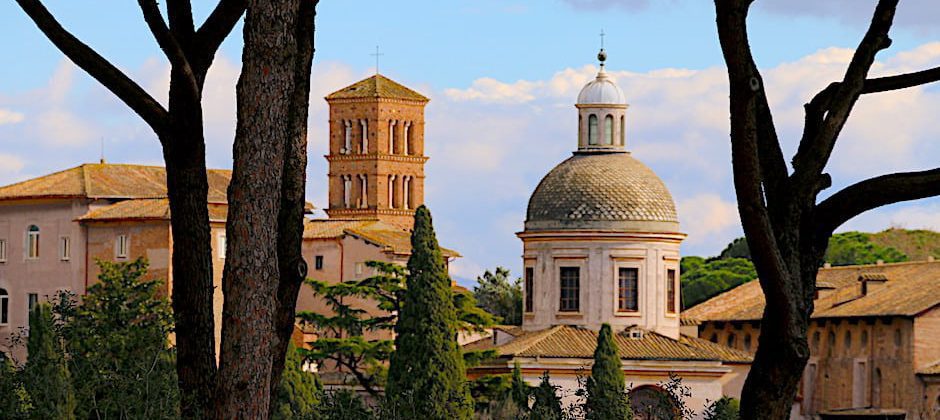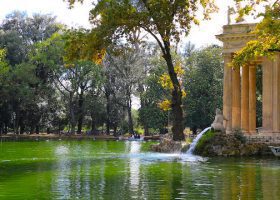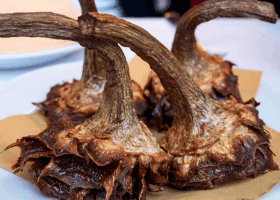Heading to Rome but unsure which museums to visit or what to see beyond the Colosseum? In this guide, we’ll detail which historical monuments and attractions you have to see and what makes them so famous. Here are Rome’s top monuments and attractions to visit.
Rome’s Top Monuments and Attractions
13. Trajan’s Column
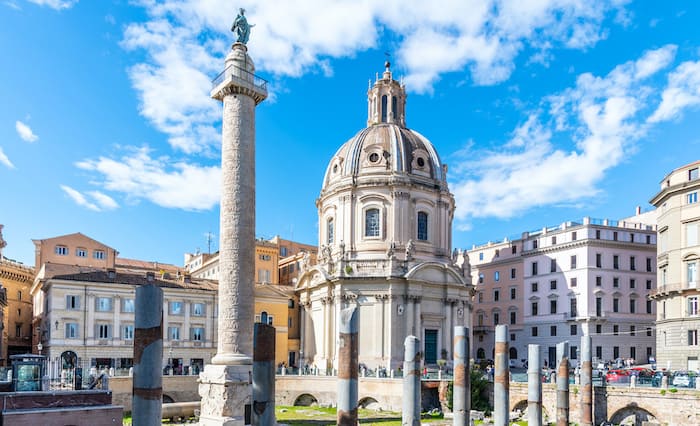
Trajan’s column is an incredible monument and surviving piece of propaganda from the second century A.D. The column has an incredible history and plays a very important role in our ability to put together ancient timelines.
Standing at 114 feet tall (35 meters) and constructed approximately in A.D. 113, the column honors Emperor Trajan for his conquests in Dacia or modern-day Romania. It is located in Trajan’s Forum, which is also dedicated to the late emperor.
It is an incredible feat of engineering by none other than Apollodorus of Damascus who is one of the most influential architects of all time. He can take credit for two of the best-preserved buildings in Rome. The structure is built of 20 massive Carrara marble cylinders stacked on top of a base. The column is wrapped with a helical frieze that winds 23 times around the column and features 2,662 figures telling 155 stories or scenes.
Ok, so a massive column survived this long with some stories on it. What’s the big deal? The column is hollowed out in the center and there is a staircase winding all the way to the top. At the top, you’ll find a statue of St. Peter. Originally, the figure of Trajan sat on top of it until it was removed by the church and replaced with St. Peter.
The symbolism goes further. Trajan’s Forum is home to Trajan’s market, which was a multi-level market that even featured luxury apartments at the center. Yep, Romans wanted the same material stuff we do! Prior to the market’s construction, there was a massive hill here. How high? You guessed right, 114 feet tall. Trajan builds a massive phallic symbol the size of the hill he moved with him on top. Amazing.
Address: Via dei Fori Imperiali
12. The Mouth of Truth
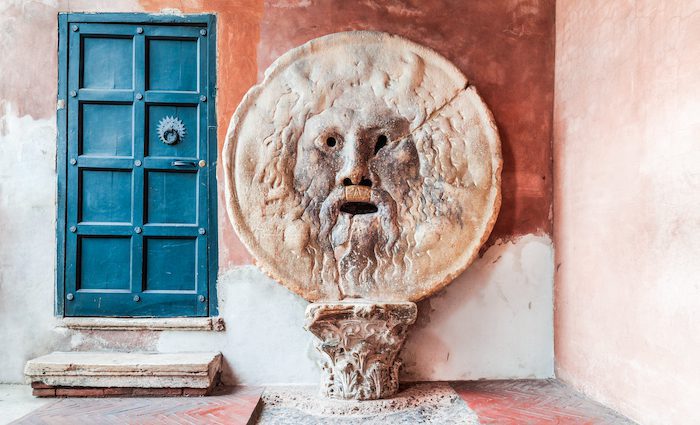
In Italian, the Mouth of Truth is known as la Bocca della Verità and the translation is quite literal. The disc is well over 2,000 years old. Its first home was most likely the Temple of Hercules where it may have served as a drain cover for runoff water.
Now, it exists in the Santa Maria Cosmedian Church, which is across the street from the Temple of Hercules. The figure of Oceanus is on the front of this 3,000-pound (1,300 kilogram) disc. Oceanus is a Titan sea god, and you can also find him as the centerpiece of the Trevi Fountain.
Today, visitors pay €2 to put their hand in the mouth of truth and take a picture. Normally, there’s a bit of a queue but it moves quickly. The legend is that if you put your hand in the mouth and tell a lie, the mouth will bite your hand off. The legend was immortalized in the film “Roman Holiday” in 1953 when Gregory Peck and Audrey Hepburn’s characters visited this monument.
While there, make sure you step into the Church of Santa Maria Comedian. The word “comedian” derives from a Greek word for pure. Inside the church, you will find an important Christian relic, the skull of St. Valentine.
Address: Piazza della Bocca della Verità, 18
Top Colosseum Tours
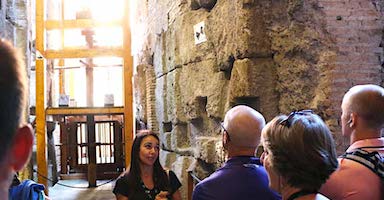
Best Seller
Colosseum Underground Tour with Roman Forum and Palatine Hill
Only 2% of visitors to the Colosseum are able to see the Underground, making tours a rare, exclusive experience. Our tours give you access to the Underground, Arena Floor, and first and second tiers—areas most people never see. Skip the line and enjoy priority access, guided by an expert who brings the Colosseum’s rich history to life. These spots sell out quickly, so don’t wait—secure your place now for this unforgettable opportunity.
See Prices
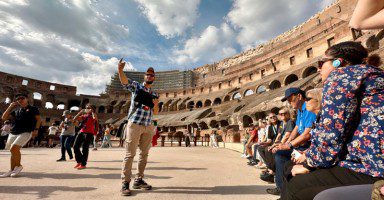
Customer Favorite
Special Access Colosseum Arena Floor Tour Through the Gladiator’s Gate
Reaching the Colosseum’s Arena Floor is no easy feat; tickets sell out quickly, leaving most visitors stuck in crowded corridors with limited views. With us, bypass the lines and enter through the Gladiator’s Gate to stand on the Arena Floor, giving you a front-row view of Rome’s nearly 2,000-year-old symbol of power and glory. With your friendly guide, uncover the Colosseum’s brutal past, then continue to the Roman Forum and Palatine Hill to explore the epicenter of ancient Roman life.
See Prices
11. The Tiber Island
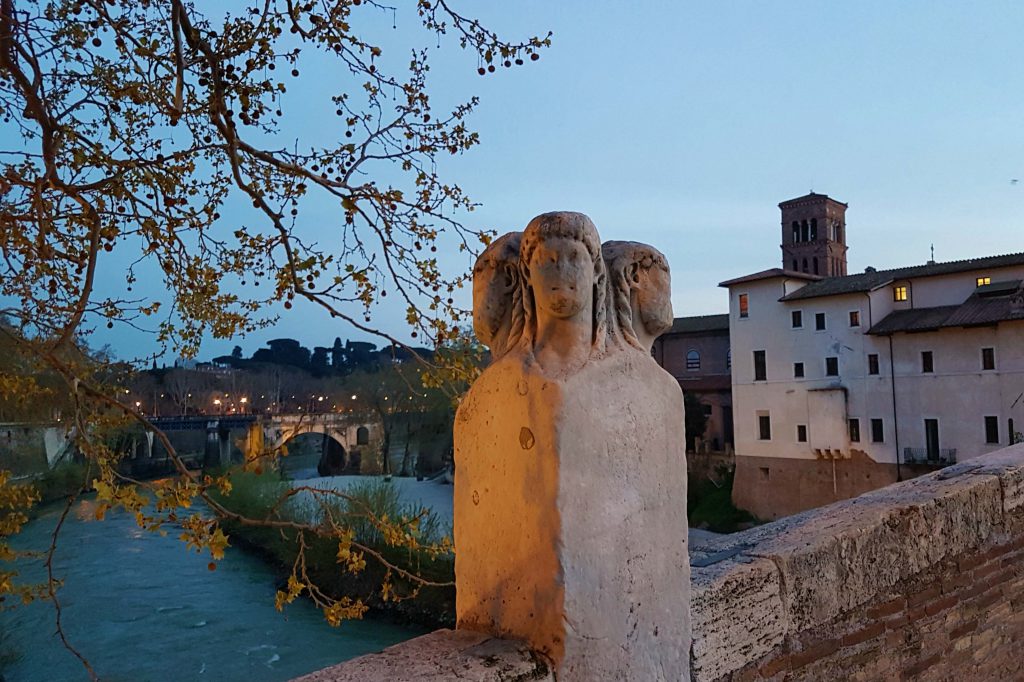
Tiber Island is an amazing modern-day site. Two bridges connect either bank of Rome to this small island, which is home to one of Rome’s main hospitals. Locals say that if you are not born on Tiber Island, you are not truly Roman.
It’s common to hear locals use being born on this island to add credibility to an argument. Two Romans may be debating a historical fact or traditional cuisine and if one says, “Listen, I was born on Tiber Island,” that can often be enough to end the argument.
Legend has it that the body of Rome’s last king prior to the republic, Tarquinius Superbus, was thrown into the Tiber river in 510 B.C. and that eventually, sediment built up around him to form the island. This is almost definitely not true, but I love a good legend.
Also, you’ll see bars open on Tiber Island and even a mini-movie theatre in the summer. It’s one of my favorite places to sit down and have a drink with friends and loved ones in the heat of summer. Often, the cool water flowing around the island can drop the temperatures a degree or two.
Address: Tiber Island
10. Belvedere of Gianicolo Hill
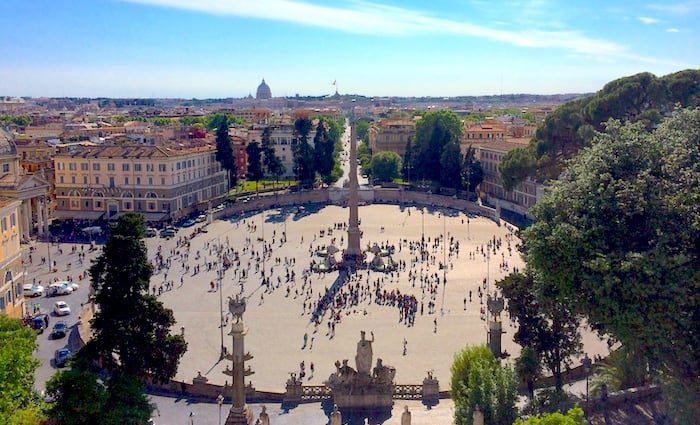
The word “belvedere” (bell – vey – dare – ā) literally translates to a beautiful view, and that is exactly what you’ll get. There are many amazing natural viewpoints in Rome, but Gianicolo Hill beats them all.
Located on the west side of Rome’s center, Gianicolo Hill is a favorite of all Romans. Take a loved one up there for a viewpoint date or go with friends and enjoy some good conversation. There’s normally a stand that sells less-than-perfect sandwiches and overpriced beer—get a drink and bite to eat and enjoy the view.
When in Rome, do as the locals do: take a taxi up here at night and walk back down into the center. It’s a really cool and local thing to do when visiting the city.
Are you ready to explore Belvedere of Gianicolo Hill and other iconic sites in Rome without the hassle of traffic? Check out our Rome Golf Cart Food Tour: Explore the City’s Iconic Sites and Cuisine.
Address: Piazzale Giuseppe Garibaldi
9. The Spanish Steps
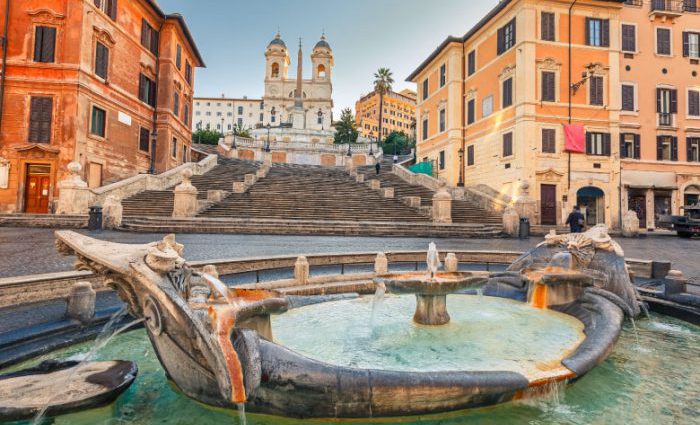
The Spanish Steps and Piazza di Spagna are synonymous with high-end shopping due to the concentration of luxury stores nearby. Italy’s most famous shopping street, via Condotti, is directly opposite the Spanish Steps in Piazza di Spagna.
The Italian name for these steps is La Scalanita di Trinita di Monti, which means the steps of three tiers—a very straightforward name that describes their architectural form. Simple yet beautiful: three tiers of steps.
Why do we call them the Spanish Steps then? The Spanish Embassy is located about a hundred meters south of the steps in Piazza di Spagna or The Square of Spain. There are a lot of great things to do and see in this area. Check out our Rome in a Day Tour for a stress-free way to see it all.
Address: Piazza di Spagna
8. Piazza Navona
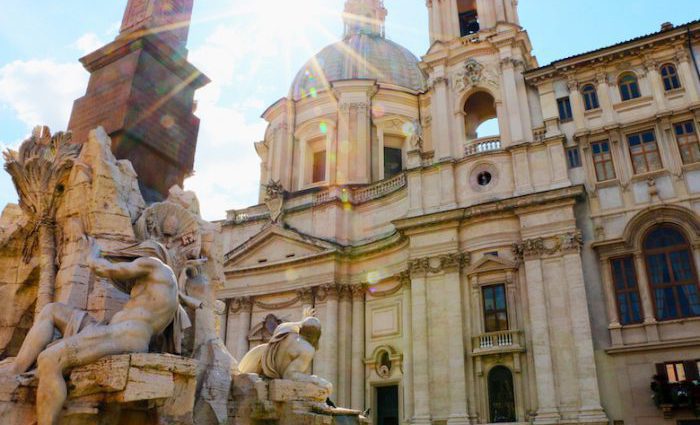
Piazza Navona is a very unique piazza and a must-visit site. It’s completely pedestrian-friendly and lined with restaurants and cafes. Stroll through on foot to admire its three fountains with its famed central Four River Fountain by Gian Lorenzo Bernini.
Bernini’s fountain is framed by the breathtaking church of St. Agnus in Agony, which was designed by the Rainaldi father-and-son team along with Francesco Borromini. There are old wives’ tales about the relationship between this church and Bernini’s fountain, which were undoubtedly created out of the bitter rivalry between Borromini and Bernini.
Bernini was chosen for a commission of Palazzo Barberini over Borromini, which is likely where the rivalry began. As the story goes, Bernini’s statue representing the Nile river holds its hand out towards the church as if bracing for it to fall due to architectural incompetence. However, it’s very unlikely that this was the hidden meaning—the fountain was built years before the church was begun.
Be sure to check out these top things to see in Piazza Navona. You can also take a Rome in a Day tour that includes this piazza and many other sights or try this DIY Rome walking tour. Also, here are five great restaurants near Piazza Navona to stop and get something to eat.
Address: Piazza Navona
7. The Trevi Fountain
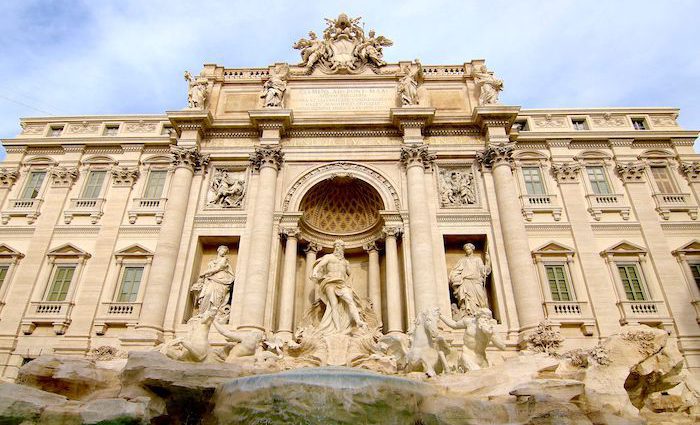
Trevi Fountain is among the world’s most magnificent fountains. This enormous masterpiece is situated at the back of Palazzo Polli right in the center of Rome and is completely free to visit.
Gian Lorenzo Bernini was originally going to design the fountain in the 17th century, but nothing ever came of it. A hundred years later, Nicola Salvi got the job by losing a competition for best drawing. Salvi lost to a Florentine named Alessandro Galli. But the Romans were unhappy about a Florentine getting the commission. So, eventually, Salvi “won” the job out of fear of the mob.
Construction began in 1732 and was completed in 1762, 11 years after Salvi’s death. The job was handed to architect Giuseppe Pannini, who worked with multiple sculptors to finish the project. The fountain’s facade tells a gripping story of its history. Discover the history of Trevi Fountain and why it is so famous for your visit. Also, there are a few great restaurants nearby the fountain where you can stop for a bite to eat.
Address: Piazza di Trevi
Popular Rome Tours
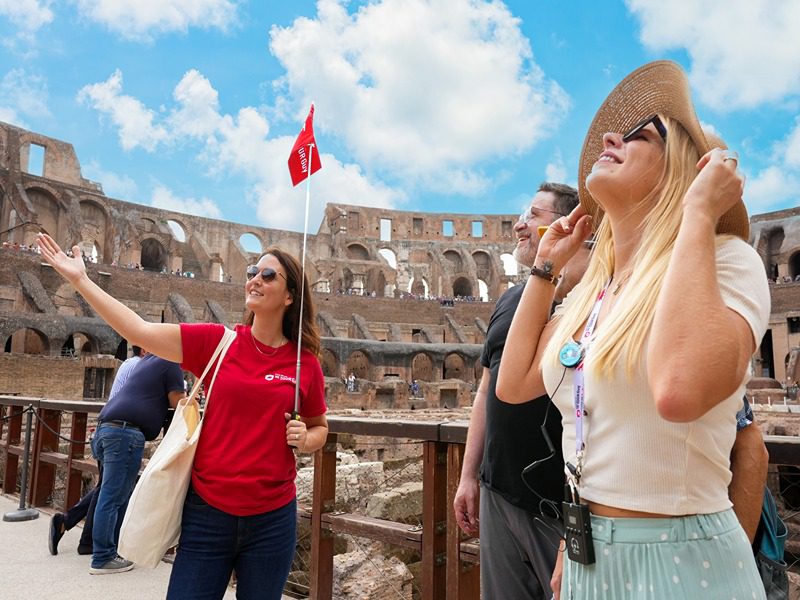
Best-Selling Tour
Rome in a Day Tour with Colosseum and Vatican Museums
Seeing the best of Rome in a single day might seem like a big undertaking, but our expertly designed tour makes it effortless with skip-the-line tickets, included transportation, and engaging guides to lead the way. In just 7 hours, you’ll visit renowned sites like the Sistine Chapel, Colosseum, Trevi Fountain, and Pantheon. With fascinating stories at every stop, you can skip the stress and immerse yourself in the vibrant heritage and culture of Rome all in one remarkable day.
See Prices
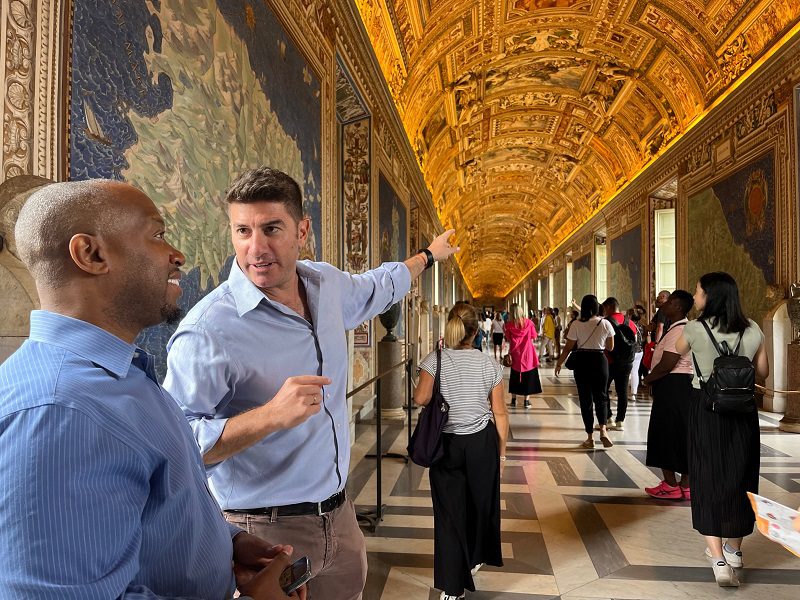
Best Price!
Privileged Entrance Vatican Tour with Sistine Chapel
Without the right access, visiting the Vatican means fighting crowds, long waits, and missing the most significant rooms and works of art. Our privileged entrance tour offers more than just entry—it’s an immersive experience led by a storytelling guide who brings the Vatican to life. Skip the line and explore the Vatican Museums, including the Raphael Rooms and the Sistine Chapel, with engaging insights that make each moment memorable and meaningful.
See Prices
6. The Palatine Hill
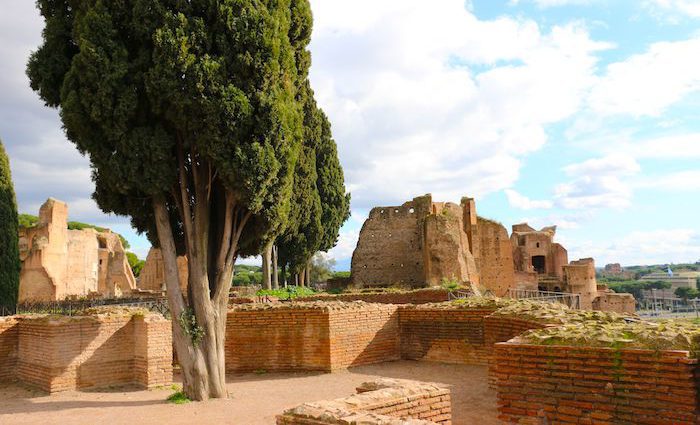
One of two important hills in Rome (the other being Capitoline Hill), Palatine Hill is where the Romulus and Remus legend derives and the foundation of Rome. If the hill is befitting of Romulus, the first King of Rome, it is surely befitting of the Roman emperors to follow and the Roman elite.
Admission to this famed archeological site is included in your ticket to the Colosseum and an absolute must-see. Walk on mosaic floors that Augustus himself walked on. There’s plenty more to see of the palaces along with incredible views of the Circus Maximus and Roman Forum. Also, look out for a piece of an aqueduct—turn left once entering and you should find it.
Address: Palatine Hill
5. The Pantheon
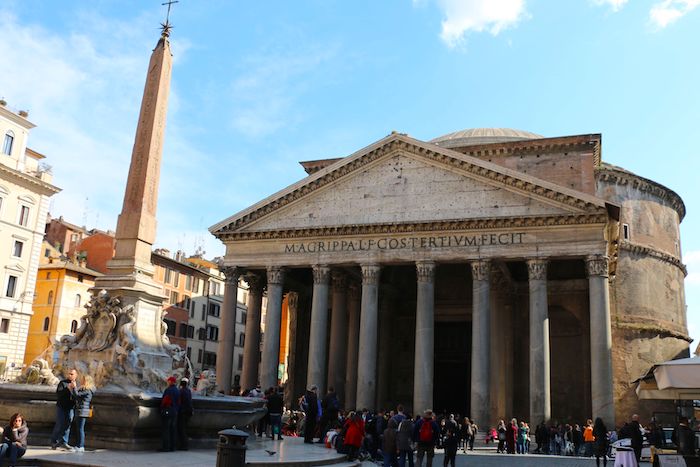
Once one of Rome’s greatest structures, the Pantheon is the best-preserved structure from antiquity without question. The building survives today as a Catholic Church, Santa Maris degli Angeli e dei Martiri, but was originally a pagan temple.
The name may mean “Of All The Gods”, but there’s some speculation around that. Construction began at the beginning of the second century under the rule of Emperor Hadrian and was inaugurated about 10 years after.
The facade reads, “Marcus Agrippa, Son of Lucius, Built This in His 3rd Time Console.” Marcus Agrippa did, in fact, build the original structure, but it was like comparing a barn to the Eiffel Tower. The original structure, commissioned by Marcus Agrippa, burnt down twice due to its wood construction. Hadrian commissioned the current structure out of stone, which is why it has stood the test of time.
While it is unknown who the original architect was, it’s a common belief that the only architect talented enough to construct the interior dome would have been Apollodorus of Damascus.
A great way to explore the history of the Pantheon and other important sights is to join our Skip-the-Line Pantheon Express Guided Tour in Rome or Rome in a Day tour. Be sure to check out all the other top things to see and do around the Pantheon, plus the best places to eat nearby.
Address: Via della Salara Vecchia, 5/6
4. The Roman Forum
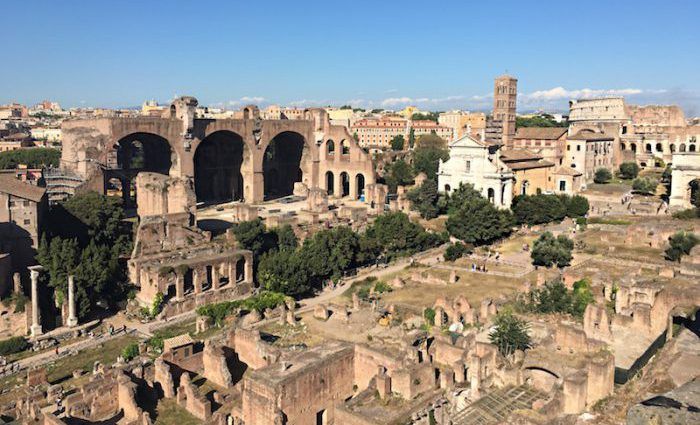
The Roman Forum is the best look into the world of the ancient Romans, a sophisticated and cultured society that brought the world many steps closer to modernization and brought many cultures together.
Yes, Rome was a fighting nation, but the reason they grew as a society was due to their ability to politic and incorporate conquered nations after defeat. You could join Rome and prosper or continue to rebel and they’d sow salt into your land and pillage your towns.
The Roman Forum was home to many of Rome’s major temples and places of commerce, including the famed Senate House where politicians would decide the fate of Rome.
Today, it’s a well-preserved archeological site that, quite frankly, is downright cool. You can’t skip it and you’re going to want to see it close up. Here are some things from our guide on the top things to see in the Roman Forum you should look for:
- Arch of Titus
- Basilica of Constantine
- Temple of Antoninus and Faustina
- The Curia (Senate House)
- Temple of Saturn
- House of the Vestal Virgins
- Temple of Venus
- The Eternal Flame of Rome
- Arch of Septimius Severus
3. The Catacombs of Domitilla
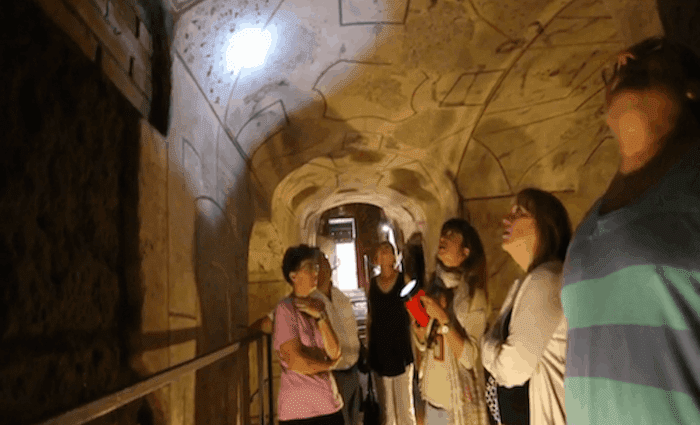
The ancient Romans were pagans. During different periods, there were varying customs. However, burial was rarely practised in Roman times. The pagans burned their dead, and it was mostly for sanitation reasons. Christians were less prevalent at the time of the second century A.D., and the pagans thought it silly that they would want to bury their dead.
If Christians wanted to carry out this custom, they had to do so outside the walls of Rome. This, then, is how the catacombs came to be used from the second century onward.
You can visit the catacombs of Rome in almost any month of the year, by yourself or with a tour. Tours make it a bit easier as they get you to and from the catacombs and a few other points of interest like the Appian Way and the Capuchin Bone Crypts. Check out our Rome catacomb tours.
Address: Via delle Sette Chiese 282
2. The Basilica of St. Peter
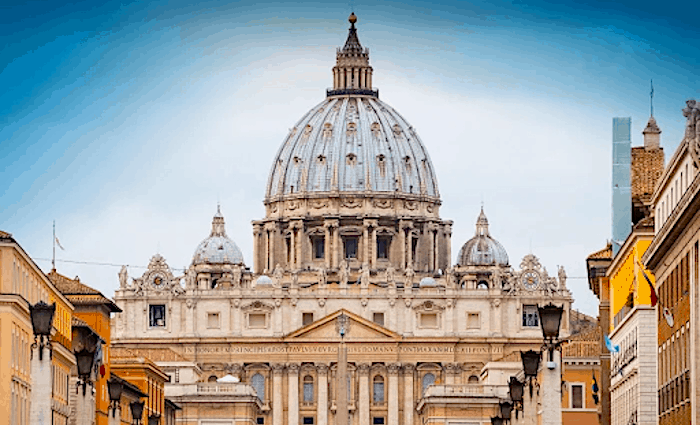
The Basilica of St. Peter, part of Vatican City, is the most important church ever constructed in Christendom. According to Matthew, when Jesus met Simon he said, “And I tell you that you are Peter, and on this rock, I will build my church, and the gates of hell shall not prevail against it.”
The name Peter actually means stone, and according to Catholic dogma, the grave of St. Peter is underneath the central altar of St. Peter’s Basilica. When Jesus changed Simon’s name and explained that he was the rock that he’d build his church on, I don’t think he literally meant using him as part of the foundation of a building.
That said, the Vatican doesn’t like taking chances. When they read the verse, they built a church on top of Peter’s grave. It’s a much more complex story than that and definitely something to read more on. Walking into St. Peter’s Basilica for the first time will undoubtedly be one of the most memorable moments of any person’s life, regardless of their religion.
The current church sits on part of the original foundation of the former Basilica of St. Peter, built by Constantine in the fourth century, which lasted over a thousand years. The current structure broke ground in 1506 and was officially completed in 1627, but additions were later made. Read more about the history of St. Peter’s Basilica, the Michelangelo masterpiece La Pietà inside, and the guided tour to climb St. Peter’s Dome.
Address: Piazza San Pietro | Admission: Free to enter. Climbing St. Peter’s Dome costs €8 via the stairs or €10 with an elevator ride—highly recommended.
1. The Colosseum
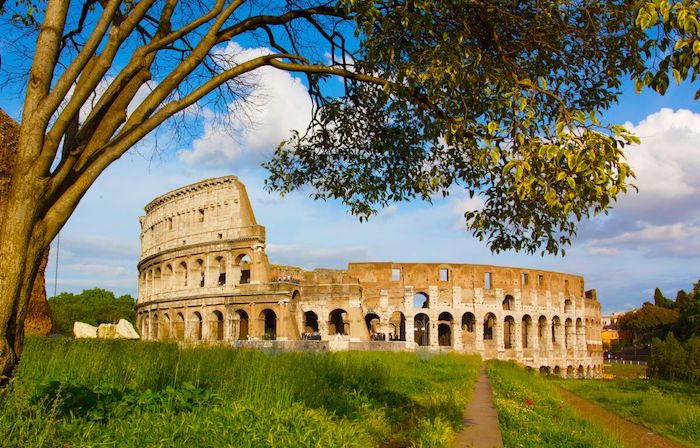
The Flavian Amphitheater, commonly known as the Colosseum, is one of the greatest achievements of antiquity. It’s a stadium in the center of Rome that could seat between 45,000 – 80,000 spectators and feed their thirst for blood. Used to entertain the inhabitants of Rome, sometimes the games were either state-sponsored or privately-sponsored as a political move or power play.
The Colosseum is in incredible shape for being an almost 2,000-year-old building that has been pillaged and stripped for parts. Visiting it is easy under normal circumstances, with the exception of long lines. Admission tickets also include the Palatine Hill and Roman Forum, which we have featured on this list.
There are different levels of access for the Colosseum, ranging from general admission to restricted area access like the Underground, Arena Floor, and Top Tiers. We definitely recommend a guided tour of the Colosseum and have options for all budgets. If you travel across the world to visit Rome, this is the epicenter of your trip!
Explore the best Colosseum tours (with maps) and everything you could want to know about the monument in our complete Colosseum guide.
Address: Piazza del Colosseum 1
Related Lists
Rome Geography and Facts
If you are headed to the Eternal City, you might as well know more about where it is.
- Rome is the capital of Italy and the president normally takes residence in the city on the Palazzo Quirinale.
- History dates the founding of Rome to 753 B.C. but this is a loose estimation.
- Rome is 496 square miles and home to between 3 and 4.3 million people, making it the 93rd largest city on our little planet.
- The Tiber river runs through Rome and has one island named Tiber Island. The river empties into the Mediterranean Sea, which is 21 miles (34 kilometers) away.
- Rome is located in the region of Lazio, which borders Tuscany, Umbria, Marche, Abruzzo, Molise, and Campania.
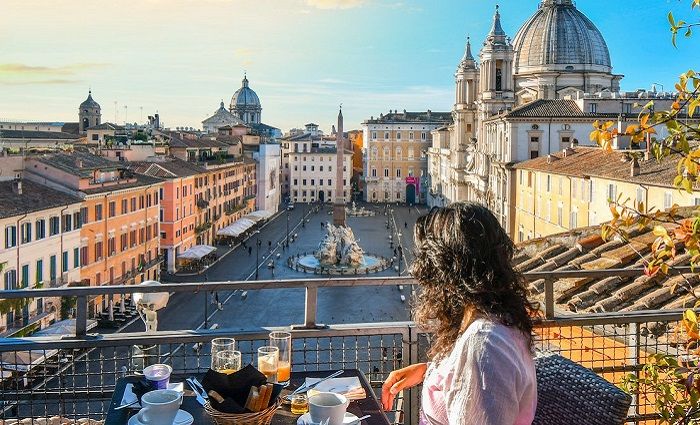
Where To Stay in Rome
Rome has a rich cultural history and many iconic landmarks to explore. Plan where to stay in the magnificent Eternal City in the best neighborhoods.

